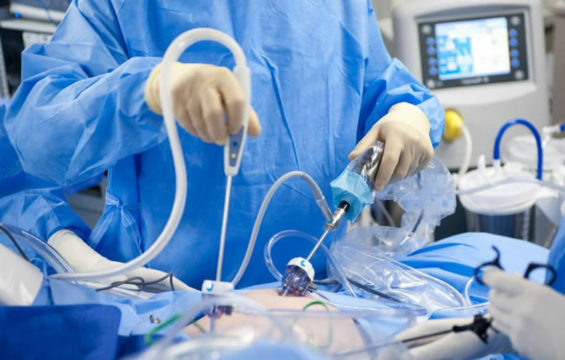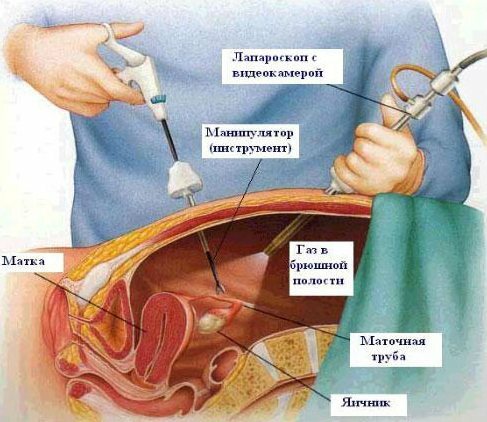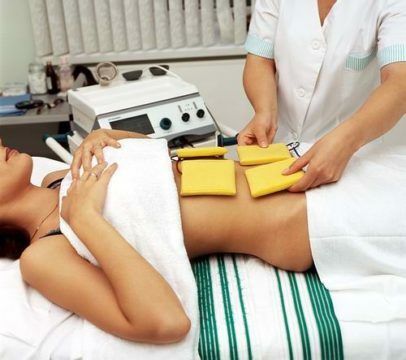Women's health requires special attention, because the ability to bear children depends on his condition. It happens that an operation is required for laparoscopy of the ovaries even before the birth of the child. It is necessary, since a developing cyst can cause great damage to the entire body. Such a surgical intervention is very common, so the question of how the pregnancy will proceed after laparoscopy of the ovaries is relevant.

Why is ovarian health important for pregnancy
If you and your spouse have just started trying to conceive a baby and it does not work right away, do not be afraid. On average, couples fertilize an egg in a year's time only. But if during the year pregnancy has not come - the most common reason in the female body - this is the cyst.
The reason for the appearance of a cyst on the ovaries is a hormonal malfunction in the work of the female body or permanent inflammatory processes. During the periods in the ovary, a follicle is formed, inside of which eggs are created. In the middle of the cycle, this formation reaches a size of 2 cm and bursts, thereby supplying the uterus with oocytes, and in the body of women the period of ovulation occurs. With hormonal failure, this "sac" does not burst, and from it a follicular cyst is formed, which interferes with the subsequent processes of cell renewal. In this case, the process of ovulation ceases to occur and conception does not occur.
The small size formation can be eliminated by means of medicines for 2 - 3 menstrual cycles, cysts of the big sizes or already in the started condition are removed surgically by means of a laparoscopy.
What is the danger of ovarian cysts:
- When the cyst reaches a certain size, it prevents pregnancy. As there is a process of squeezing the ovaries and fallopian tubes.
- Cysts can cause infections, and if there is a twisting or formation of adhesions, an immediate operation is required.
- May develop into a malignant tumor with complete infertility of the body.
Indications for surgical intervention are ovarian structures with a diameter of more than 8 cm. At the same time, during the drug treatment no improvement is detected.
If with a cyst you still managed to get pregnant without surgery, then most women experience natural improvements in the condition of the ovaries. Since the hormonal structure of the organism changes on a background of pregnancy, which has a positive effect on health. In 4% of pregnant women, a cyst can break and an urgent operation will be required. Therefore, in any case, you need complete control over your child's bearing process by the doctor.
According to statistics, cysts that are formed in the left ovary are benign and do not interfere with the conception process, and can also resolve themselves in the first trimester.
If you already have a diagnosis of polycystic disease, then you can not do without surgery. Since such a disease indicates a serious hormonal failure, which led to the appearance of a large number of formations at once. Before the operation, the gynecologist will try to carry out hormonal treatment, however, in most cases, laparoscopy is eventually appointed.
To be afraid of operation it is not necessary, as it is spent with the minimum damage of a tissue of an ovary. In addition to those cases where its complete removal is required.90% of women after successful surgery are conceived in the first 3-6 months.
What is laparoscopy of the ovaries
Under laparoscopy is meant several operations that are aimed at removing the affected tissues of the ovaries, sometimes the entire organ is removed or partially, depending on the indications.

Perform such intervention with several indications in a planned manner:
- Infertility is not identified origin;
- Suspected cysts, endometriosis, or presence of tumors;
- Presence of chronic pain in the pelvis, which did not yield to conservative treatment.
The patient is urgently treated with:
- Suspicion of ovarian apoplexy;
- Possible torsion of the cyst legs;
- On rupture of organ tissues;
- Acute adnexitis, which did not succumb to traditional treatment.
As can be seen from the list, it is often resorted to surgical intervention to get rid of functional infertility. Polycystic ovary syndrome( PCOS) is one of the most common causes of the inability to conceive. With such a disease, ovarian cysts are surgically removed in several ways:
- Decoration - removal of the upper layer of the organ by cutting with a needle electrode.
- Cautery - cuts are made on the body to provoke the appearance of healthy tissue.
- Wedge-shaped resection - excision of a piece of ovary in the form of a wedge.
- Endothermocoagulation - small holes are made with the help of the electrode.
- Electrodrying is the removal of multiple cysts by electric current.
Thus, laparoscopy for polycystic ovaries is carried out in different ways based on the indications.
Contraindications to operation
There are limitations in women who can do laparoscopy, and any of its types:
- High degree of obesity( 3 - 4).This is due to the problematic nature of the necessary research;
- There are violations in blood clotting;
- Postponed or the period of acute severe infections;
- Operative interventions that have been performed through an incision in less than six months;
- Myocardial infarction;
- Stroke;
- Violations in the work of the kidney or heart;
- Peritonitis or severe swelling of the intestine;
- Abundant amount of adhesions in the abdominal cavity;
- Tumor in diameter more than 10 cm or malignant formation;
However, there are exceptions, in any case, a physician who takes into account all the factors of your organism, including risks, gives an admission to the operation.
Rehabilitation period
After the planned operation deleted polycystic ovary and pregnancy is now possible, you should go through the postoperative period and the rehabilitation period.

- After laparoscopic removal of the affected tissue of the ovaries, a period comes after the operation, which lasts until the discharge from the gynecological department. A distinctive feature is the ability to move a woman right after the operation. And only 6-8 hours after the end of the surgical intervention is allowed to take liquid food.
- On the first day, there may be a feeling of discomfort in the abdominal, shin, neck or shoulder area. This is due to the release of gas from the body, which is used during the operation.
- Painkillers after the procedure are usually not used, as well as antibiotics, since interventions in the body are minimal. However, all appointments are at the discretion of the doctor.
- After the operation, anticoagulant therapy is performed to reduce the risk of thrombosis. This is due to a prolonged stay in the posture, when the head is below the legs. Possible postoperative period from two to seven days.
Rehabilitation treatment
Now we will consider what period the rehabilitation takes, and accordingly, through how many you can try to become a mother again.
Complete recovery of the body occurs in 2-6 weeks. During this time, it is necessary to comply with all the recommendations of doctors on medication and regimen.
There are several mandatory restrictions for all women who have made laparoscopy:
- You can not have sexual intercourse for one month. This excludes all the options for intimacy, which can lead to an orgasm woman.
- You can not work hard at sports, only minimal loads.
- Hard physical labor is forbidden for a month.
- You can not raise more than 3 kg for 3 months.
- With regard to food intake, it is worthwhile to refrain from acute, salty, spicy and consuming alcohol-containing beverages for 2 to 3 weeks.

To speed up the healing of the ovaries, doctors recommend taking a course of physiotherapy after the end of the rehabilitation period. And immediately after the operation, vitamin complexes should be taken.
With regard to menstruation, it recovers quickly, and in some cases the cycle does not even go astray. If still deviations from the usual dates of the onset of menstruation are present, then after 2 - 3 months everything will return to normal.
It should be taken into account that the cyst has an unpleasant function - it can appear again, so it is necessary to undergo additional treatment for the gynecologist with drugs( gonadotropin-releasing hormone agonists).
Possible complications of
After surgery, complications are very rare, but they should be taken into account:
- Damage to other organs( intestine or bladder) is possible.
- Vessel integrity disorder. Cardiovascular trauma.
- Severe allergy to anesthesia.
- And it is also possible to enter the infection or get it in the postoperative period, because the body will be weakened.
Start worrying about your health after surgery if you have:
- There is a temperature above 38 degrees and lasts more than 24 hours.
- There was unbearable pain in the lower abdomen. Redness and pain in the neck.
- Uncertainty of consciousness and weakness after anesthesia for more than 6 hours.
- Appearance of whitish or yellowish-red color.
If at least one of the symptoms you have appeared is urgent to see a specialist.
Now it remains to answer the main question - when can you get pregnant.
Pregnancy after laparoscopy
You can become pregnant after surgery in a month. Usually they plan a pregnancy from a month to six months after the surgical intervention. It all depends on the type of operation performed. If the cyst was removed, then within a month you can conceive a child, if the treatment was done for endometriosis, then approximately 3 to 6 months after the operation.
This operation has a positive effect on reproductive functions in all women. The process of recovery and conception in each individual. However, most doctors recommend not to plan the appearance of a child in the first three months after the operation, since for this period the full restoration of the woman's health is allotted.
If you nevertheless become pregnant in the first two months after surgery with indications for a PCOS operation, then you will need increased supervision at the gynecologist. Since the removal of cysts provokes miscarriage of the fetus in the first weeks of pregnancy. And if you had a problem with patency of the fallopian tubes, then in the background of an early postoperative pregnancy, fetoplacental insufficiency may occur.
Conclusions
Infertility is the most terrible diagnosis, in terms of psychology, for any woman who has not yet given birth. Since at the subconscious level in the female body motherhood is laid. If more than a year of constant attempts you and your spouse can not conceive a child, then it is necessary to conduct research on infertility.
In the female body, the most common cause is the ovarian cyst, which disrupts the functions of ovulation. If medication failed to cure the disease, laparoscopy should be resorted to. In 90% of cases, pregnancy after surgery comes in the first three to six months. But do not rush with conception and immediately after surgery try to get pregnant, as this can lead to undesirable consequences and various complications.
In general, the very operative intervention is small, so complications are extremely rare.



